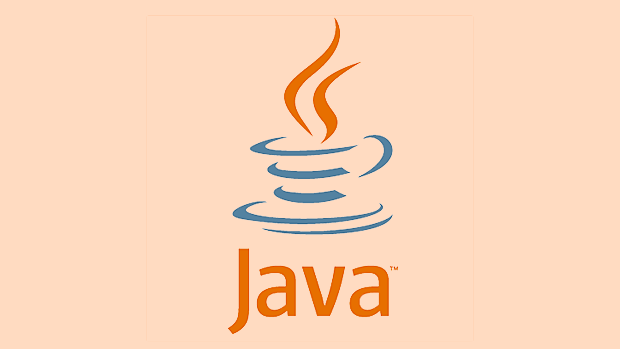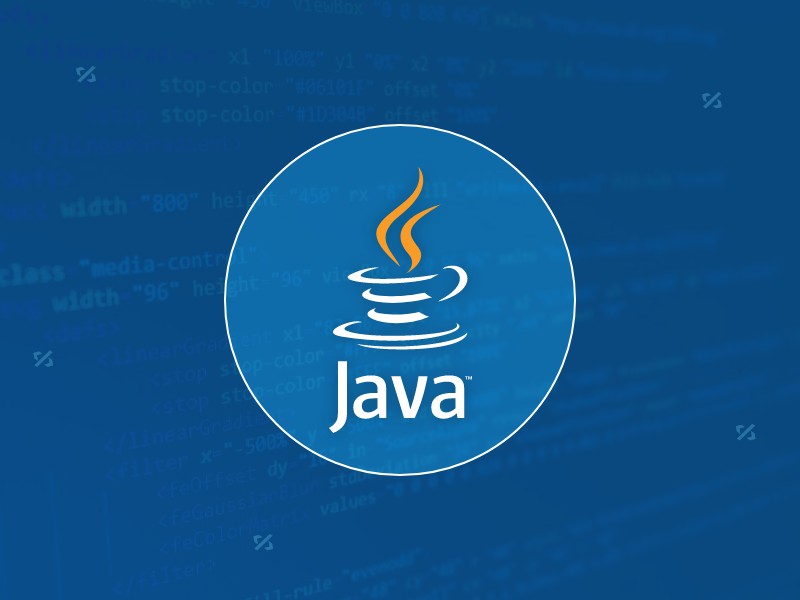How to prevent deadlocks in Java concurrency?
Jul 08, 2025 am 02:54 AMThe key to avoiding deadlocks is to understand the conditions for their occurrence and adopt appropriate strategies to avoid evasion, which includes the following 4 methods: 1. Unify the locking order to ensure that all threads acquire locks in the same order, thereby avoiding loop waiting; 2. Use explicit lock ReentrantLock and set the timeout time, try to acquire locks through the tryLock() method to avoid indefinite waiting; 3. Reduce the granularity and scope of use of the lock, only lock the key parts, try to use local variables and concurrent collection classes to reduce the probability of conflict; 4. Use tools such as jstack, VisualVM, etc. to detect potential deadlocks, and promptly identify and solve thread blocking problems.

In Java multithreaded programming, deadlock is a common but easily overlooked problem. It usually occurs when multiple threads are waiting for each other's resources, causing the program to be stuck and unable to continue execution. The key to avoiding deadlocks is to understand the conditions in which they occur and adopt appropriate strategies to circumvent.

1. Avoid nested locking (Lock Ordering)
Most deadlock problems arise from multiple threads acquiring multiple locks in different orders. For example, if thread A acquires lock 1 first and then lock 2, and thread B acquires lock 2 first and then lock 1, a deadlock may occur.

Solution: Unified locking order
As long as all threads acquire locks in the same order, this loop waiting situation can be effectively avoided. For example, it is stipulated that the lock with a smaller number is always acquired first, and then the lock with a larger number is obtained.

For example:
// Thread 1
synchronized(lockA) {
synchronized(lockB) {
// do something
}
}
// Thread 2 (if it is also in the same order, there will be no conflict)
synchronized(lockA) {
synchronized(lockB) {
// do something else
}
}In this way, the two threads will not experience cross-wait, thereby avoiding deadlocks.
2. Use an explicit lock and set the timeout (Try-with-timeout)
Java provides a more flexible lock mechanism like ReentrantLock , which supports trying to acquire locks and setting timeouts. This method can actively give up when the lock is not acquired, rather than waiting indefinitely.
Suggested practices:
- Use
tryLock()method instead ofsynchronized - Set reasonable waiting time to avoid permanent blockage
Sample code:
ReentrantLock lock1 = new ReentrantLock();
ReentrantLock lock2 = new ReentrantLock();
boolean acquired1 = lock1.tryLock();
boolean acquired2 = false;
if (acquired1) {
try {
acquired2 = lock2.tryLock(500, TimeUnit.MILLISECONDS);
} finally {
if (!acquired2) lock1.unlock();
}
}If the second lock cannot be acquired within the specified time, you can free up the acquired resource and try again or exit to avoid falling into a deadlock state.
3. Reduce Lock Scope
Many times, for simplicity and convenience, we will directly lock the entire method or use a large range of synchronization blocks, which not only affects performance, but also increases the risk of deadlock.
Optimization direction:
- Move code that does not need to be synchronized out of the synchronization block
- Try to use local variables instead of shared resources
- Use concurrent collection classes (such as
ConcurrentHashMap) instead of manual locking
for example:
// Not recommended practice synchronized void badMethod() {
// Do a lot of operations that do not involve sharedResource.doSomething();
}
// Better writing method void betterMethod() {
// Only lock the key parts synchronized(sharedResource) {
sharedResource.doSomething();
}
}The smaller the range of the lock, the shorter the time it holds the lock, the lower the probability of conflict.
4. Use Tools to Detect
Even if you have been dealing with multi-threaded logic carefully, there may be omissions. At this time, you can use some tools to help check potential deadlock risks:
- JVM comes with jstack tool : it can print thread stacks to identify which threads are waiting and which lock they are waiting for.
- VisualVM or JConsole : Graphical tool that can monitor thread status in real time and even automatically prompt for possible deadlocks.
- IDE plug-in or static analysis tool : such as IntelliJ's thread analysis function, can also give prompts during the encoding stage.
Run command example:
jstack <pid> | grep -i deadlock
This command can help you quickly locate whether there is a deadlock.
Basically that's it. Although deadlocks may seem a bit complicated, as long as you pay attention to the locking order, reduce the lock range, use explicit locks reasonably, and combine with tool troubleshooting, it can greatly reduce its probability of occurrence.
The above is the detailed content of How to prevent deadlocks in Java concurrency?. For more information, please follow other related articles on the PHP Chinese website!

Hot AI Tools

Undress AI Tool
Undress images for free

Undresser.AI Undress
AI-powered app for creating realistic nude photos

AI Clothes Remover
Online AI tool for removing clothes from photos.

Clothoff.io
AI clothes remover

Video Face Swap
Swap faces in any video effortlessly with our completely free AI face swap tool!

Hot Article

Hot Tools

Notepad++7.3.1
Easy-to-use and free code editor

SublimeText3 Chinese version
Chinese version, very easy to use

Zend Studio 13.0.1
Powerful PHP integrated development environment

Dreamweaver CS6
Visual web development tools

SublimeText3 Mac version
God-level code editing software (SublimeText3)

Hot Topics
 How to handle concurrent access in Java backend function development?
Aug 04, 2023 pm 08:22 PM
How to handle concurrent access in Java backend function development?
Aug 04, 2023 pm 08:22 PM
How to handle concurrent access in Java backend function development? In modern Internet applications, high concurrent access is a common challenge. When multiple users access backend services at the same time, if concurrency is not handled correctly, it may cause problems such as data consistency, performance, and security. This article will introduce some best practices for handling concurrent access in Java backend development. 1. Use thread synchronization Java provides a variety of mechanisms to handle concurrent access, the most commonly used of which is thread synchronization. By adding synch before key code blocks or methods
 How to deal with deadlock problems in C++ development
Aug 22, 2023 pm 02:24 PM
How to deal with deadlock problems in C++ development
Aug 22, 2023 pm 02:24 PM
How to deal with deadlock problems in C++ development Deadlock is one of the common problems in multi-threaded programming, especially when developing in C++. Deadlock problems may occur when multiple threads wait for each other's resources. If not handled in time, deadlock will not only cause the program to freeze, but also affect the performance and stability of the system. Therefore, it is very important to learn how to deal with deadlock problems in C++ development. 1. Understand the causes of deadlocks. To solve the deadlock problem, you first need to understand the causes of deadlocks. Deadlock usually occurs when
 How to debug deadlocks in C++ programs?
Jun 03, 2024 pm 05:24 PM
How to debug deadlocks in C++ programs?
Jun 03, 2024 pm 05:24 PM
Deadlock is a common error in concurrent programming that occurs when multiple threads wait for locks held by each other. Deadlocks can be resolved by detecting them using a debugger, analyzing thread activity, and identifying the threads and locks involved. Ways to resolve deadlocks include avoiding circular dependencies, using deadlock detectors, and using timeouts. In practice, deadlocks can be avoided by ensuring that threads acquire locks in the same order or by using recursive locks or condition variables.
 Application of reflection mechanism in Java concurrency?
Apr 15, 2024 pm 09:03 PM
Application of reflection mechanism in Java concurrency?
Apr 15, 2024 pm 09:03 PM
Answer: The reflection mechanism allows Java programs to inspect and modify classes and objects at runtime through the reflection API, which can be used to implement flexible concurrency mechanisms in Java concurrency. Application: Dynamically create threads. Dynamically change thread priority. Inject dependencies.
 Prevention and solution of deadlock and starvation in golang function concurrency control
Apr 24, 2024 pm 01:42 PM
Prevention and solution of deadlock and starvation in golang function concurrency control
Apr 24, 2024 pm 01:42 PM
Deadlock and starvation in Go: Preventing and solving deadlock: Coroutines are waiting for each other and cannot perform operations. Use the runtime.SetBlockProfileRate function to detect. Prevent deadlocks: Use fine-grained locking, timeouts, and lock-free data structures to prevent deadlocks. Starvation: The coroutine continues to be unable to obtain resources, and fair locks are used to prevent starvation. Fair lock practice: Create a fair lock and wait for the coroutine to try to acquire the lock for the longest time to acquire the lock first.
 How to use the Fork/Join framework in Java function concurrency and multi-threading?
Apr 27, 2024 am 10:09 AM
How to use the Fork/Join framework in Java function concurrency and multi-threading?
Apr 27, 2024 am 10:09 AM
How to create parallel tasks using Fork/Join framework in Java? Define task logic, calculate results or perform actions. Create a ForkJoinPool to manage parallel threads. Use the fork() method to submit tasks. Use the join() method to get the task results.
 Deadlock prevention and detection mechanism in C++ multi-threaded programming
Jun 01, 2024 pm 08:32 PM
Deadlock prevention and detection mechanism in C++ multi-threaded programming
Jun 01, 2024 pm 08:32 PM
Multi-thread deadlock prevention mechanism includes: 1. Lock sequence; 2. Test and set up. The detection mechanism includes: 1. Timeout; 2. Deadlock detector. The article takes an example of a shared bank account and avoids deadlock through lock sequence. The transfer function first requests the lock of the transfer out account and then the transfer in account.
 How to solve deadlock in Go development
Jun 30, 2023 pm 04:58 PM
How to solve deadlock in Go development
Jun 30, 2023 pm 04:58 PM
Methods to solve the deadlock problem in Go language development Go language is an open source statically typed compiled language that is widely used in concurrent programming. However, due to the characteristics of the concurrency model of the Go language, developers often encounter deadlock problems when writing concurrent programs. This article will introduce some methods to solve the deadlock problem in Go language development. First, we need to understand what deadlock is. Deadlock refers to a situation where multiple concurrent tasks are unable to continue execution because they are waiting for each other to release resources. In Go language, deadlock problems are usually due to competition for resources or






